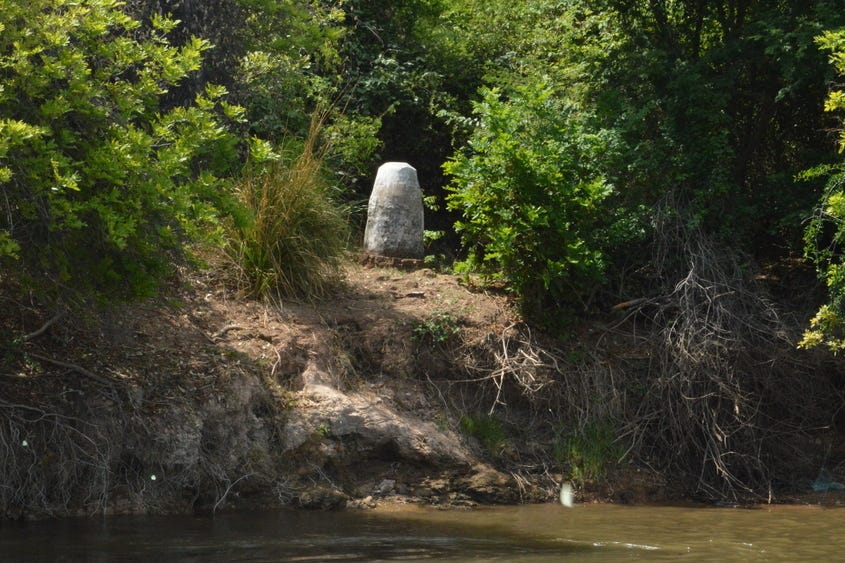Penguin Polka Dots | Bird Flu Scavengers | Nesting in Plastic | The Border Beacon
Penguin polka dots help colony-nesting birds tell each other apart
Scientists have discovered that African penguins likely use the black dots on their mates’ and colony neighbours’ snow-white underparts to tell each other apart in the melee of colony life.
African penguins are the only penguins that breed on the continent; they strut around in a number of colonies along the coasts of South Africa and Namibia.
All penguins develop spots on their breasts and bellies in unique patterns a few months after hatching, and those spots stay with them for life.
A team of Italian scientists working with a small captive colony of African penguins at a zoo in Rome ushered penguins one by one into a small enclosure that contained a life-size photograph of their mate and another of a member of the colony, with or without the dots showing.
They found that penguins immediately responded to the images of their mates with the dots, and did not respond to the same images with the dots removed.
The experiment worked even when the positions of the lifelike images (with dots) were switched.
Until now it was supposed that African penguins, which form lifelong bonds with their mates, mostly used audio cues to distinguish their partners from their neighbours in the colony.
“Our results provide the first evidence of a specific visual cue responsible for spontaneous individual recognition by a bird,” the authors state.
An African penguin at Boulders Beach, Cape Town | Paul Mannix | Wikimedia Commons
Will bird flu sicken The Gambia's beach-combing vultures?
In early April, near Kianko beach in southern Gambia, ornithologist Bob Wilde found six dead West African crested and Caspian terns.
They were among the first of more than 10,000 crested terns and many other waders, gulls and cormorants that would die from bird flu (likely H5N1) along The Gambia’s 80 kilometre-long coastline.
Within days of recording those first fatalities Wilde counted another 140 or so terns lying dead around the Sanyang Lagoon.
Alarmingly, dozens of critically-endangered hooded vultures then arrived to feed on the tern corpses.
This happened elsewhere. At low tide along Kartong Beach near The Gambia’s border with Senegal, Parks and Wildlife Management staffer Mariama Sanneh photographed 78 hooded vultures feeding on another 'mass wreckage' of both Caspian and West African crested terns.
Vultures are famously able to digest potentially deadly bacteria and viruses, like anthrax and rabies. It remains unclear though if those older resistance mechanisms will help them to weather bird flu viruses.
Exposure of African vultures to bird flu viruses only goes back around 15 years, Wilde and his co-authors state in a new report recording their observations.
"Closer surveillance of vultures would be interesting to determine their exposure rates to [bird flu]. This would also cast some light on the susceptibility of vultures to infection and subsequent disease."
Hooded vulture on the wing in The Gambia | Francesco Veronesi | Wikimedia Commons
Some birds build nests from plastic along remote Namibian coastline
Conservationists in Namibia working to free Cape fur seals from entanglements with human waste have made a perplexing discovery: bird nests made from plastic.
The discovery — along a remote stretch of the Namib Desert’s coastline — was made during an assessment trip by the team from Ocean Conservation Namibia (OCN), a nonprofit based in Walvis Bay.
Naude Dreyer from OCN and two colleagues travelled for around 600 kilometres up the coastline from Luderitz, a town in southern Namibia, back to Walvis Bay.
Distressingly, despite its remoteness, they still found parts that were littered with discarded fishing nets, fishing lines, ropes and plastic drums and buckets.
Not all of this detritus has a local origin. “A lot of the stuff is coming from the [open] ocean,” says Dreyer.
He and his colleagues even discovered birds’ nests that had been made from plastic straps and fishing lines.
“In the middle of this mess, there are tens of thousands of seals, all potential victims of entanglement,” the group says in its latest newsletter.
Dreyer says his team has earmarked sites where they plan to return to do targeted clean-ups.
During their 600 kilometre-long journey, they did pass through a number of areas that were unspoiled and starkly-beautiful, and they saw a number of active seal colonies.
You can see some of these places for yourself on this short video posted by OCN.
Cape fur seals at Cape Cross, Walvis Bay | Wikimedia Commons
Nature Notes: a lonely beacon marks the spot
A lone, concrete beacon stands on the banks of the Zambezi River downstream from the village of Kanyemba. It marks the border between Zimbabwe and Mozambique.
Across the river is a third country: Zambia. It lies to the left of where the Luangwa River, a tributary, meets the Zambezi.
At this time of the year, the Zimbabwean shoreline is thickly fringed with flowering river acacias and, where we land the boat, overhung with trees: African mangosteen and river-litchis, though their fruit has not yet appeared.
Liquid notes lure us into thick bush, past a stand of ilala palms that lift feathery blue-green crowns to the sky.
The bird I am looking for is hard to find, but in the end its lavish song betrays a hiding place in the branches of a small tree.
It is a thrush-like bird with a green back and wings flecked with yellow. An eastern nicator. My first on this trip.







